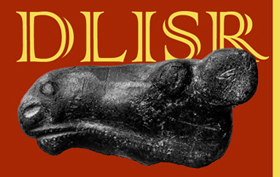Indigenous Science
Resources

| Digital Library of Indigenous Science Resources |
 |

| Introduction | Scope Statement | How to Use DLISR | Participate in DLISR | Credits | Feedback |
A Brief History of Native Science The first book to have the term "Native Science" in its title was Native Science: Natural Laws of Interdependence, published in 2000. Its author, Tewa Pueblo Gregory Cajete, Ph.D., had previously published several books on Native science education and edited a volume on sustainable agriculture. But of course, Native persons have been learning and teaching about the natural world for thousands of years, sometimes in the same ways we do now and sometimes not. The term "science" is itself only a few hundred years old, as is the process of formalized research common to Western science, and it took quite a while for people to settle on a term such as "Native Science" or its global correlate, "Indigenous Science." Whatever its name, people were starting to talk about and practice the discipline by the last half of the 1960's. Early and still-active leaders include Lakota philosopher Vine Deloria, Jr. and Diné ethnobotanist Donna House. In the 1970's, several important events helped bring Native Science to a wider audience. The Society for the Advancement of Chicanos and Native Americans in Science was founded in 1973. Four years later, in 1977, the American Indian Science and Engineering Society was organized. Both organizations inaugurated magazine-style journals that feature articles and information about Native peoples in the sciences and in science education. NSF worked with AISES to hold workshops on Native science education in which leaders such as Vine Deloria were active, and published a number of small handbooks on the subject for teachers and policy-makers. In 1975, AAAS (the American Association for the Advancement of Science) passed a remarkable resolution about Native science. Here it is, from the
AAAS archives. In July of that same year, an article on Native Science was published in the journal Science (Vol. 189, No. 4196, pages 38-39), which is the journal of AAAS. That article is available online at the site for archived Science issues maintained by JSTOR (subscription required). The last ten years have witnessed explosive growth in Native Science education, research, organizations, and activities -- only a sample of which is noted here. The Alaska Native Science Commission was established by the Alaska Federation of Natives, with support from the National Science Foundation, in 1993. In 1995, the Alaska Rural Systemic Initiative began the first year of what has become an extraordinarily successful 10-year program for developing science education curricula that incorporate Native ways of knowing and learning. Other Rural Systemic Initiatives sponsored by the National Science Foundation and designed to increase the efficacy of science education work with Native peoples in the Colorado Plateau area, the Navajo Nation, and tribes of the Northern Great Plains. New educational opportunities at colleges and universities such as Northwest Indian College are advancing Native science in important ways. NWIC's Tribal Environmental and Natural Resources Program, for example, "is designed to build tribal managers who know and understand our precious land and its resources. We do this in a thoroughly Native way. . . The core classes, Indian culture and history, physical and life sciences, management, political science, and related communication courses, are taught in an integrated course. This means, for instance, that the student will not only learn about biology, but how biology relates to Indian culture, chemistry, math, and to the environment." At the other end of the educational spectrum, organizations such as the Cradleboard Teaching Project headed by Buffy Sainte-Marie, Ph.D., "reaches out from Indian country" into mainstream primary educational venues through packaged curricula such as "Science: Through Native American Eyes". In the area of public education, special exhibits and educational workshops on Native Science have been held at several museums in the last several years, including the Minnesota Science Museum. A meetings of Native Science educators and researchers resulted in the book Science and Native American Communities: Legacies of Pain, Visions of Promise, edited by Iroquis psychology professor Keith James, Ph.D. in 2001. A 2002 meeting of Native scientists, elders, artists, and educators, funded by the National Science Foundation, has produced a volume of presentations, artwork, and photographs about Native Science that we hope to publish soon. Native scientists gathered again in 2003, this time at the AAAS annual meeting in Denver, Colorado, where Native science was the focus of two major symposia encompassing almost an entire day between them, on Sunday, February 16. For more Information take a look at the materials listed under Additional Resources.
Return to the main Native Science page. Return to the DLISR Collection. DLISR is maintained by Tapestry Institute.
|